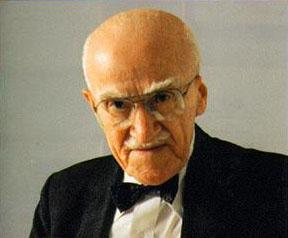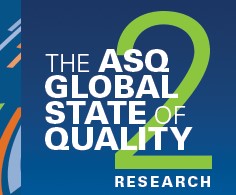Have you ever thought of incorporating quality tools into your daily life?
Consider this scenario: a family of 4 (mom, dad & boys), schools, extra school activities, doctor’s appointments, my husband’s job, house chores and running own businesses; in summary: LIFE. There are so many things going on in my daily routine, that if we as a family do not get organized, chaos is going to be a strong force managing our lives – instead of being the other way around. As I use to say, being a Quality Engineer I’m always looking for situations in my life to apply any of the quality tools I know. Added to that, being married to a Software Engineer, makes that search even more real and interesting.
One of the best solutions, after trying a few things to help us get organized, it is using a well known methodology called SCRUM.
Lots of people think that this type of methodologies are used in software development only or in a company environment. But I’ll show you that if you apply some of the concepts of SCRUM, you will be amazed of how your life goes smoother, you will be able to find ‘time’ that now seems so hard to have with all the things that are happening at the same time in your daily life. You will get things done and will not be able to tell anymore excuses like “I’ll do it tomorrow” or “I forgot about it”, and you will be more relaxed. I promise you!
For those of you who are not familiar with SCRUM, here is its definition:
“Scrum is an agile framework for completing complex projects. Iterative and incremental, flexible and holistic strategy where a self-organized development team works as a unit to reach a common goal.
It is lightweight and simple to understand (but difficult to master). It adopts an empirical approach accepting that the problem cannot be fully understood or defined, focusing instead on maximizing the team’s ability to deliver quickly and respond to emerging requirements.”
Keep in mind that SCRUM it is NOT a process neither a technique; it is a framework within you can employ any processes and techniques you know. That is why Scrum works well for any complex, innovative scope of work, and that includes any busy mom/dad/family life.
So, how do I use SCRUM at home? The example I want to share with all of you is the process of getting the USA Green Card (permanent resident status). My husband and I were born in Argentina, and after living in USA for 9 years, we’ve applied to get the green card in order to become permanent residents.
Let’s see first how Scrum works. Click the image to enlarge it.
1. Product backlog: A Product Owner (person responsible for maximizing the value of the product and the work of the Development Team) creates a prioritized wish list for the product called a Product Backlog. The product backlog helps the team to break the product into smaller, more manageable pieces and build it incrementally in a series of short time periods called Sprints.
2. Sprint planning: during this period the team pulls a small chunk from the top of the product backlog to create a Sprint Backlog, and then decides how to accomplish those items during the sprint.
3. The sprint: during the sprint, the team has a certain amount of time — a sprint (usually two to four weeks) — to complete its work; but it meets each day in a Daily Scrum, to asses progress and make necessary adjustments
– Along the way, the Scrum Master keeps the team focused on its goal, remove impediments for the team so everyone can focus and move forward with their work.
– At the end of the sprint, the work should be potentially shippable: ready to hand to a customer, put on a store shelf, or show to a stakeholder.
– The sprint ends with a Sprint Review of the product and a Sprint Retrospective of the team’s work process, relationships, and tools.
4. Next sprint: Once the sprint is complete, the team chooses another chunk of the product backlog and the next sprint begins.
– The cycle repeats until enough items in the product backlog have been completed, the budget is depleted, or a deadline arrives. Which of these milestones marks the end of the work is entirely specific to the project. No matter which impetus stops work, Scrum ensures that the most valuable work has been completed when the project ends.
Let’s see how we used Scrum for the Green Card process.
– The team: my husband, our lawyer and myself.
1. When we received all the information and requirements from the Government throughout our lawyer, my husband created the product backlog.
NOTE: One of the best software to get organized using SCRUM methodology is called Trello. It is very easy to use, it is free and you can download its app to your smartphone for free access wherever you are.
A good way to handle the backlog/requirements and all the progress you make, is to divide your project into columns, so what you are doing and your next steps get more visible. You can use a divided whiteboard with post-it notes or anything that works the best for you. We used the following columns names in Trello (click the image to enlarge it):
– Backlog: for the complete green card backlog activities
– To Do: for the activities to do in the current sprint
– On Going: for the activities in process during the current sprint
– Done: for the activities finished in the current and previews sprints.
(We later realized that a new column called Waiting was a good addition during this process).
2. During the first sprint, we have to gather and send to our lawyer all the information about ourselves: copies of passports, birth certificates, marriage certificate, and a lot more papers (can you imagine?); plus, get all the recommendation letters (this is required for this type of green card process. The person who applied has to have 8-10 recommendation letters from all his previews jobs, from HR to managers, to any person that can give good references working with him).
3. As a solid team we were working really hard to complete this sprint. We divided the activities in a smart way. My husband and the lawyer talked/email every Monday and Friday to check how everything was going, any doubts or questions we/her may have were addressed in those weekly scrums. My husband and myself discussed in our daily scrum (during breakfast) what we were going to do that day for the green card process and, at the end of the day (during dinner) we talked briefly about what we did during the day and if something went not as we expected.
Even when the government didn’t give us a time frame to present the papers, we put a date limit to send all the requested information.
4. Every sprint was different in this process, and of course we had a lot of new requirements that made our schedule shake; but looking backward of how we perform this project, we were so well organized that the process was smooth and we finally got product shipped on time sending everything to the government.
I’m not going to get into a lot of details of the green card process, I’l do it in another post for sure because is something that a lot of people are going through and is a stressful time while the process is on going; but I just wanted to show you that even in situations of your daily life you can apply this methodology to get organized in a manner that you will not missed anything and any new requirement/change will be handle it easily.
This is just an example, we have a complete board in Trello where we have all the activities to do during this month and for the next months until the end of the year.
Another example and tool use in daily life is shown in the last post of ASQ blog:
How Lean Helped Me Travel To Egypt With Just $500 by Sunil Kaushik. So worth it to read!




